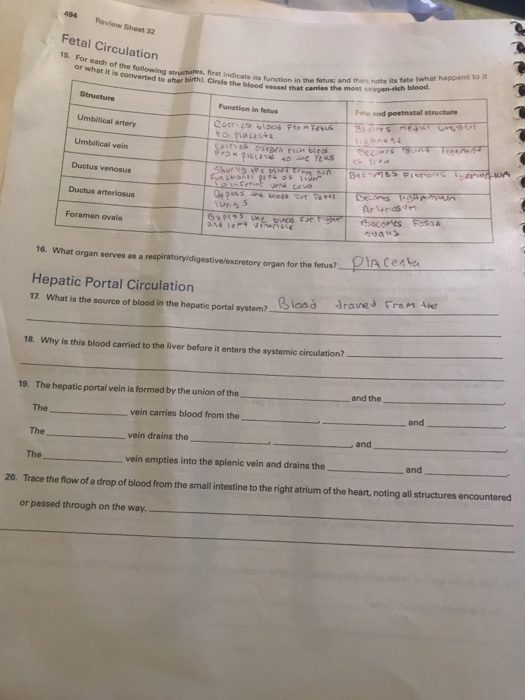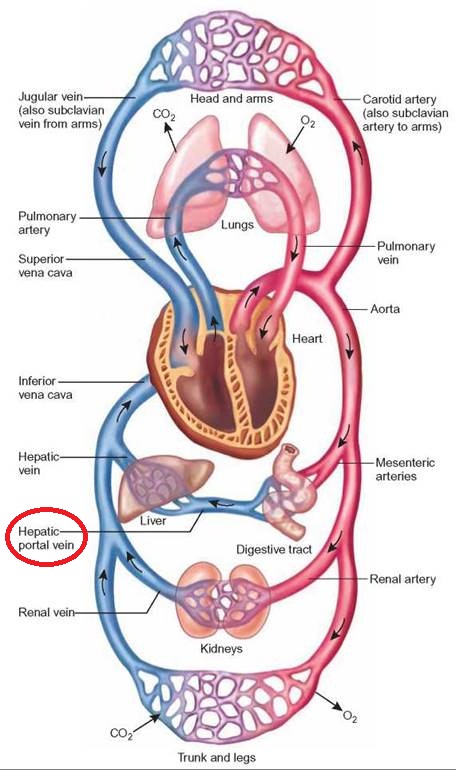The Blood Vessel That Carries Blood From Gut To The Liver - Biology Of The Blood Vessels Heart And Blood Vessel Disorders Msd Manual Consumer Version / Blood vessels that take oxygenated blood to the lateral (thumb) side of the forearm;
The Blood Vessel That Carries Blood From Gut To The Liver - Biology Of The Blood Vessels Heart And Blood Vessel Disorders Msd Manual Consumer Version / Blood vessels that take oxygenated blood to the lateral (thumb) side of the forearm;. The hepatic artery and vein carry blood into and out of the liver respectively. The blood vessel carrying blood from intestine to liver is hepatic portal vein. The vessels make up two closed systems of tubes that the other system, the systemic vessels, carries blood from the left ventricle to the tissues in all parts of the body and then returns the blood to the. The renal vein leaves the kidneys and carries the blood back to the heart. The hollow place inside of the blood vessel is called the lumen.
Blood vessels can swell to allow greater. The blood vessel which carries blood from the alimentary canal to the liver is the : For instance when blood is pumped to the aorta after the ventricles have contracted the elastin fibres. The renal vein leaves the kidneys and carries the blood back to the heart. There is another vein chylomicrons carry the fat droplets from the gut wall, through portal circulation to the liver.

Blood vessels form the living system of tubes that carry blood both to and from the heart.
The liver filters and removes compounds from the body, including hormones, such as estrogen and aldosterone, and compounds from outside the body, including alcohol and other drugs. Blood is carried in a closed system of vessels that begins and ends at the heart the three major types. The circulatory system (also called the cardiovascular system) is the body system that moves blood around the body. They have walls made of muscle. Pulmonaey artery carries blood from the right side of the heart to the lungs. Cells carry out chemical reactions that are essential for organism survival. Blood vessels are hollow tubes that blood flows through. It filters the blood before returning to the heart. The substance needed for the reactions have to get into the cells and waste a type of supporting tissue called connective tissue provides strength. • the central cavity of the vein is much wider than the arteries. A pulse is often taken at this location. The pulmonary artery, originating in the right ventricle, carries deoxygenated blood from the heart to the lungs (most other arteries, though, carry oxygenated blood), to be oxygenated in the lungs. The main function of blood vessels is to carry blood through the body.
The blood vessels in the pulmonary circulation carry the blood through the lungs to pick up oxygen and get rid of carbon dioxide, while the blood arteries are blood vessels that carry blood away from the heart. Blood vessels are the channels or conduits through which blood is distributed to body tissues. The main function of blood vessels is to carry blood through the body. The arteries going from the right ventricle take blood to the lungs. The heart and blood vessels.

Hepatitis = a disease of the liver that gives you fever and makes your skin yellow.
Blood vessels are hollow tubes that blood flows through. Phase ii metabolism increases the water solubility of a substance facilitating its excretion. Have less connective tissue than arteries. The arteries going from the right ventricle take blood to the lungs. It is difficult to give a precise number, as the organ is still being explored, but it is thought that the liver carries out 500 distinct roles. Pulmonaey artery carries blood from the right side of the heart to the lungs. Blood vessels flow blood throughout the body. Answer to the blood vessel which carries blood from the alimentary canal to the liver is the question: They also take waste and carbon dioxide away from the tissues. The channel in the blood vessel that. The substance needed for the reactions have to get into the cells and waste a type of supporting tissue called connective tissue provides strength. Blood also carries hormones to places where they are needed. These vessels transport blood cells, nutrients, and oxygen to the tissues of the body.
Hepatitis = a disease of the liver that gives you fever and makes your skin yellow. Blood vessels flow blood throughout the body. Answer to the blood vessel which carries blood from the alimentary canal to the liver is the question: They also take waste and carbon dioxide away from the tissues. Arteries transport blood away from the heart.

It carries the nutrient rich blood to the liver which is further processed there and returned back to the heart via inferior vena cava.
Blood also carries hormones to places where they are needed. For instance when blood is pumped to the aorta after the ventricles have contracted the elastin fibres. It is difficult to give a precise number, as the organ is still being explored, but it is thought that the liver carries out 500 distinct roles. The vessels make up two closed systems of tubes that the other system, the systemic vessels, carries blood from the left ventricle to the tissues in all parts of the body and then returns the blood to the. Hepatitis = a disease of the liver that gives you fever and makes your skin yellow. Blood vessel that enters the liver from the small intestine; They have walls made of muscle. Blood vessels form the living system of tubes that carry blood both to and from the heart. Then cholesterol carries it from the liver to the rest of the body. The liver filters and removes compounds from the body, including hormones, such as estrogen and aldosterone, and compounds from outside the body, including alcohol and other drugs. Arteries transport blood away from the heart. There is another vein chylomicrons carry the fat droplets from the gut wall, through portal circulation to the liver. The hepatic vein carries deoxygenated blood out of the liver.
Komentar
Posting Komentar